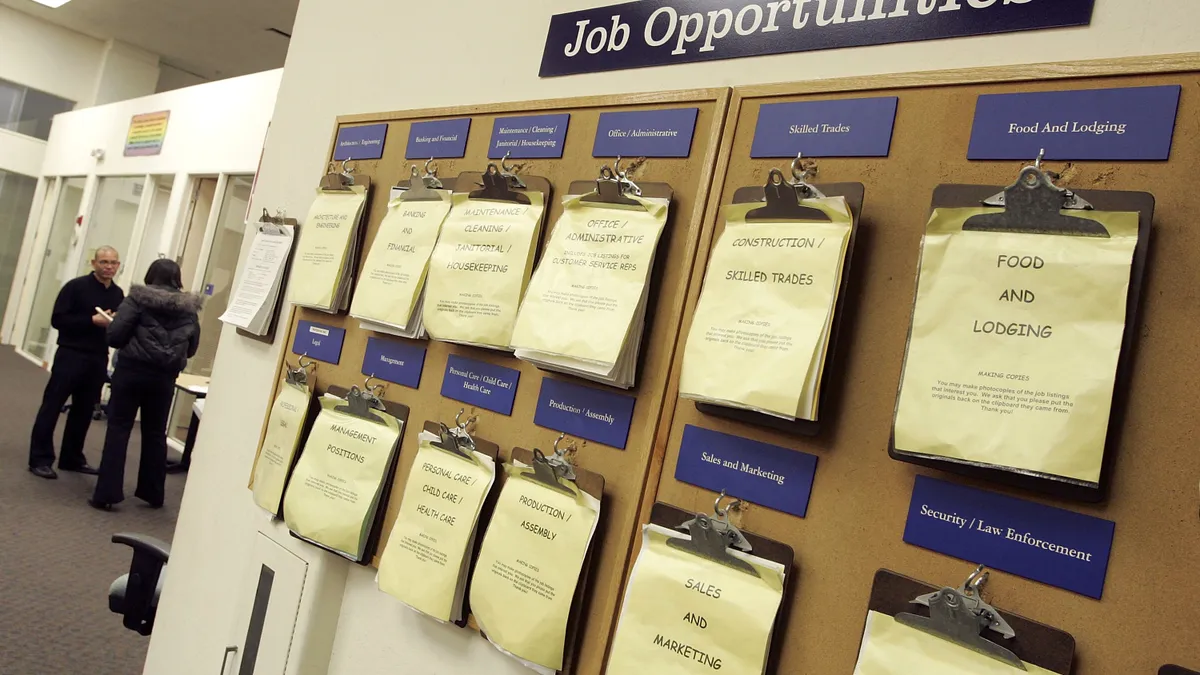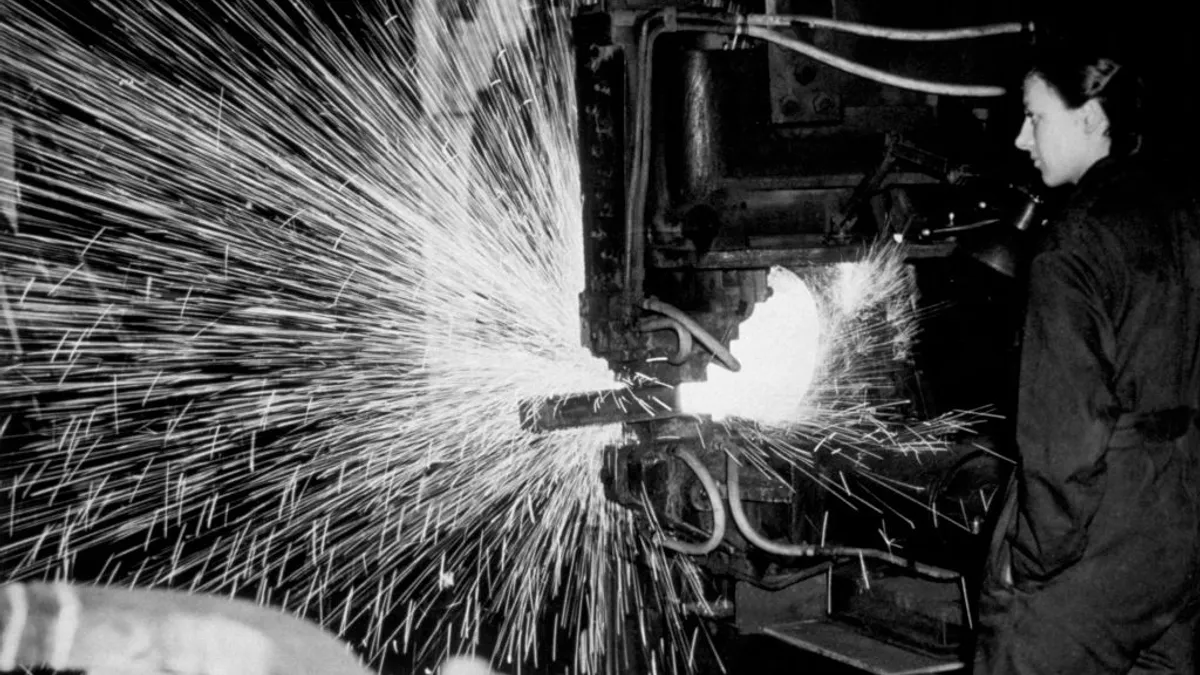From the factory floor to executive suites, men have historically dominated the automotive industry.
As of 2020, women were still underrepresented at every staffing level, making up only 24% of the auto manufacturing workforce, according to the U.S. International Trade Commission. Understanding why such a disparity exists and how to address it is imperative for fostering a more inclusive and sustainable future for the industry.
“People don’t stay at organizations where they don’t see themselves,” said Allison Grealis, founder and president of the Women in Manufacturing Association. “If people don’t see diverse individuals making up leadership teams and boards of directors, they likely will question, ‘Is this a forever place for me?’”
The lack of gender representation in the industry is central to the conversation about how automakers can better attract and retain manufacturing talent, especially as the shift to electric vehicles calls for major factory growth and additional hiring.
“The automotive business is going through a massive transformation right now,” said Jody Stidham, a managing director for Deloitte’s global automotive practice. “This is the most opportune time for creating opportunities for women.”
Whether it’s software-defined vehicles, battery technology or EV charging, new technologies and products are emerging daily that transcend traditional car manufacturing. Having more women in key roles brings more diverse perspectives to the table, which is essential as the landscape of the industry changes — particularly where consumer preference is concerned, Stidham said.
In 2019, women purchased 62% of all new vehicles in the U.S., the International Trade Commission reported. Increasing the presence of women across all stages of vehicle production could help automakers appeal to a significant demographic of the population.
“Companies have realized that being homogenous in terms of [their] workforce is not beneficial to the bottom line,” Grealis said. “Diversity of thought and talent is critically important for company success.”
Despite this, 64% of women in a 2020 Deloitte industry survey cited a lack of diversity, equity and inclusion as the top issue preventing people from considering a career in automotive, more than any other category. The issue ranked sixth among men.
Women need their own blueprint to success
The auto sector has seen a rise in women in roles like service technicians and mechanics in recent years. However, as careers unfold, many choose to pivot roles or change industries due in part to unfocused recruiting practices, limited representation and a lack of role models, Joanna Cooper, general manager of Daimler Truck’s Mount Holly plant, said in an email.
Addressing these problems requires systemic change, such as diversifying candidate pools and intentional leadership and development programs aimed at facilitating promotion. Leadership must rethink their philosophy of “‘how things have always been done’ to enable a more inclusive culture,” Cooper added.
Grealis echoed the value of career development. Auto companies — and manufacturers in general — should invest in initiatives that nurture diverse talent within their workforce. Career advancement opportunities are central to retention, she said.
To take a step towards greater representation, Toyota North America has each of its manufacturing sites run its own programming to boost inclusion, Anthony Allen, group manager of talent acquisition strategy at Toyota Motor North America, said in an email.
Toyota Motor Manufacturing Indiana, for example, has seen success recruiting women by posting videos capturing the experiences of current team members, Allen said.
“Hearing directly from those working in the various manufacturing jobs Toyota recruits for, helps prospective hires envision new possibilities. We have seen how there is a power in ‘seeing’ yourself,” Allen explained. “Testimonials have shown to be one of the most effective means of shifting outdated perceptions about manufacturing jobs and who may succeed in them.”
When Grealis started touring manufacturing companies 23 years ago, she said the processes and shop floor jobs looked different than those being filled today. Much of the job-seeking population doesn’t understand what modern automotive manufacturing looks like, she said.
“Modern manufacturing needs more brain than it needs brawn,” Grealis said. “If you look at the most successful companies they have developed robust and thoughtful relationships with educational institutions.”
Workers want more flexibility
Flexibility has proven to be a central issue for women in manufacturing and the automotive industry is no different.
Flexible work arrangements go hand-in-hand with child care, with access and affordability posing an issue for families, particularly for those in manufacturing roles that tend to operate according to fixed, in-person shifts, Grealis said.
Lack of DEI top reason women say people are discouraged from joining the auto industry
She noted that many companies have begun to invest in on-site child care services, as well as rethink shift scheduling for parents or caregivers, for example, offering later start times or shorter shifts to account for school pickup and dropoff.
Toyota offers multiple shift options at its manufacturing sites and subsidizes 24-hour child care services at two of its facilities in Indiana and Kentucky.
“We continue to focus on efforts to provide shift flexibility in all roles in manufacturing — which improves work-life balance for all team members, but we hope it will also attract more women,” Allen said.
Despite efforts by women’s organizations and companies like Toyota to shift the narrative around child care in manufacturing from being solely a women’s issue to a concern for all parents, a 2022 study by The Manufacturing Institute revealed that women report a lack of flexibility and child care as major industry challenges at a disproportionately higher rate than men.
Still, Stidham believes automakers are making strides towards gender equality as they implement diversity and inclusion programs and start to benchmark progress.
“We just need to continue on that trajectory and make sure that it is part of every business decision going forward,” she said.





















